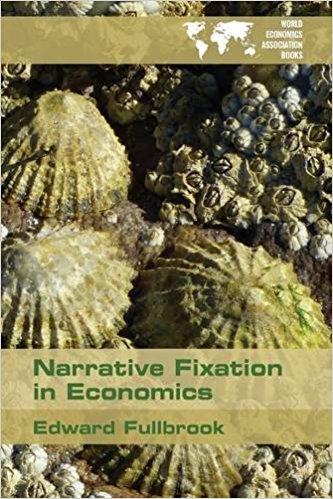From Edward Fullbrook In public, including in the training of economists, Neoclassical economics usually reads its models backwards. This gives the illusion that they show the behaviour of individual economic units determining sets of equilibrium values for markets and for whole economies. It hides the fact that these models have been constructed not by investigating the behaviour of individual agents, but rather by analysing the requirements of achieving a certain macro state, that is, a market or general equilibrium. It is the behaviour found to be logically consistent with these hypothetical macro states that is prescribed for the individual agents, rather than the other way around.[1] This macro-led analysis, this derivation of the micro from a macro assumption, is and always has
Topics:
Edward Fullbrook considers the following as important: Uncategorized
This could be interesting, too:
tom writes The Ukraine war and Europe’s deepening march of folly
Stavros Mavroudeas writes CfP of Marxist Macroeconomic Modelling workgroup – 18th WAPE Forum, Istanbul August 6-8, 2025
Lars Pålsson Syll writes The pretence-of-knowledge syndrome
Dean Baker writes Crypto and Donald Trump’s strategic baseball card reserve
from Edward Fullbrook
In public, including in the training of economists, Neoclassical economics usually reads its models backwards. This gives the illusion that they show the behaviour of individual economic units determining sets of equilibrium values for markets and for whole economies. It hides the fact that these models have been constructed not by investigating the behaviour of individual agents, but rather by analysing the requirements of achieving a certain macro state, that is, a market or general equilibrium. It is the behaviour found to be logically consistent with these hypothetical macro states that is prescribed for the individual agents, rather than the other way around.[1] This macro-led analysis, this derivation of the micro from a macro assumption, is and always has been the standard analytical procedure of theory construction for the Neoclassical narrative. Sometimes, for pedagogical reasons, authors call attention to how the “individualist” rabbit really gets into the Neoclassical hat. For example, consider the following passage from a once widely used introduction to economics.
“For the purpose of our theory, we want the preference ranking to have certain properties, which give it a particular, useful structure. We build these properties up by making a number of assumptions, first about the preference-indifference relation itself, and then about some aspects of the preference ranking to which it gives rise” (emphasis added) (Gravell and Rees 1981, p. 56).
In other words, it is not the behaviour of the individual agents that determines the model’s overall structure, nor even the structure of the preference ranking. Instead it is the macro requirement for a particular structure which dictates the behaviour attributed to the individual agents.[2] The “purpose” of this “particular, useful structure” is to rationalize the macro “conclusion” assumed at the beginning of the exercise. The resulting model shows micro phenomena determining macro phenomena, whereas, in fact, it is the starting point of the macro structure that has determined the behaviour of the model’s micro elements. Likewise, “rationality” becomes something defined to meet the exigencies of a desired conclusion.
[1] At the macroeconomic level, Neoclassical theorists these days usually drop the pretence that they are concerned with individual choice and adopt “the assumption that all individuals have the same utility function” (Arrow 1991, p. 201). This assumption of perfectly homogeneous agents is the theoretician’s equivalent of the Stalinist dream. Alan Kirman, in his analysis of the cynical expediency of this approach, notes that “the assumption of a representative individual is far from innocent; it is the fiction by which macroeconomists can justify equilibrium analysis and provide pseudo-microfoundations” (Kirman 1992, p. 125).
[2] The economic psychologist Peter Lunt describes the situation as follows.
“For work to be credible in economics, it has to work in principle, formally stated in terms that are usable in relation to the expected utility model. The validity of the data, indeed, the psychological plausibility of the account, is not quite but almost irrelevant. . . . [Economists] use selected propositions encoding specific effects as labels for putative psychological processes in rational decision making under uncertainty” (Lunt 1996, p. 280).
pp. 96-97 Narrative Fixation in Economics

